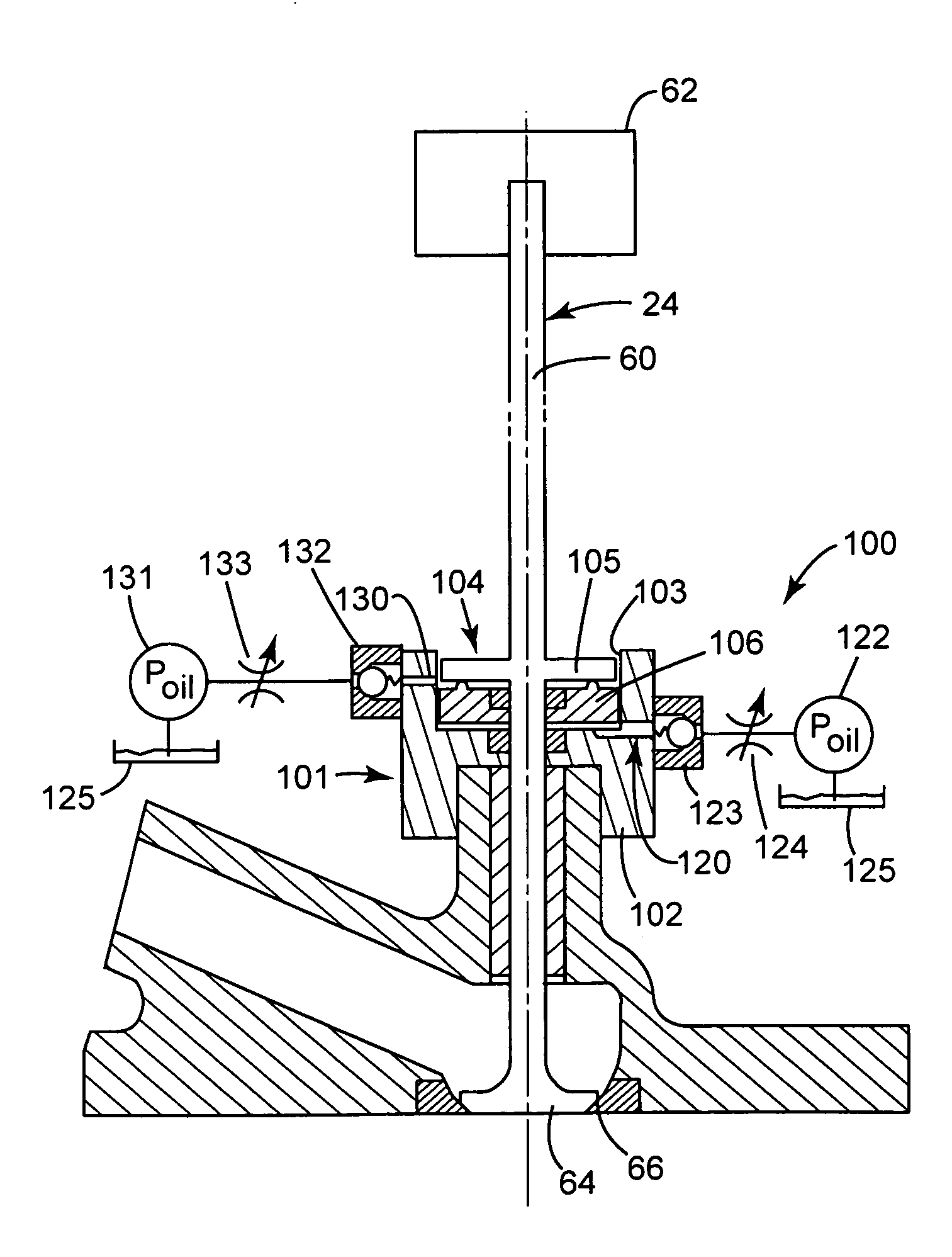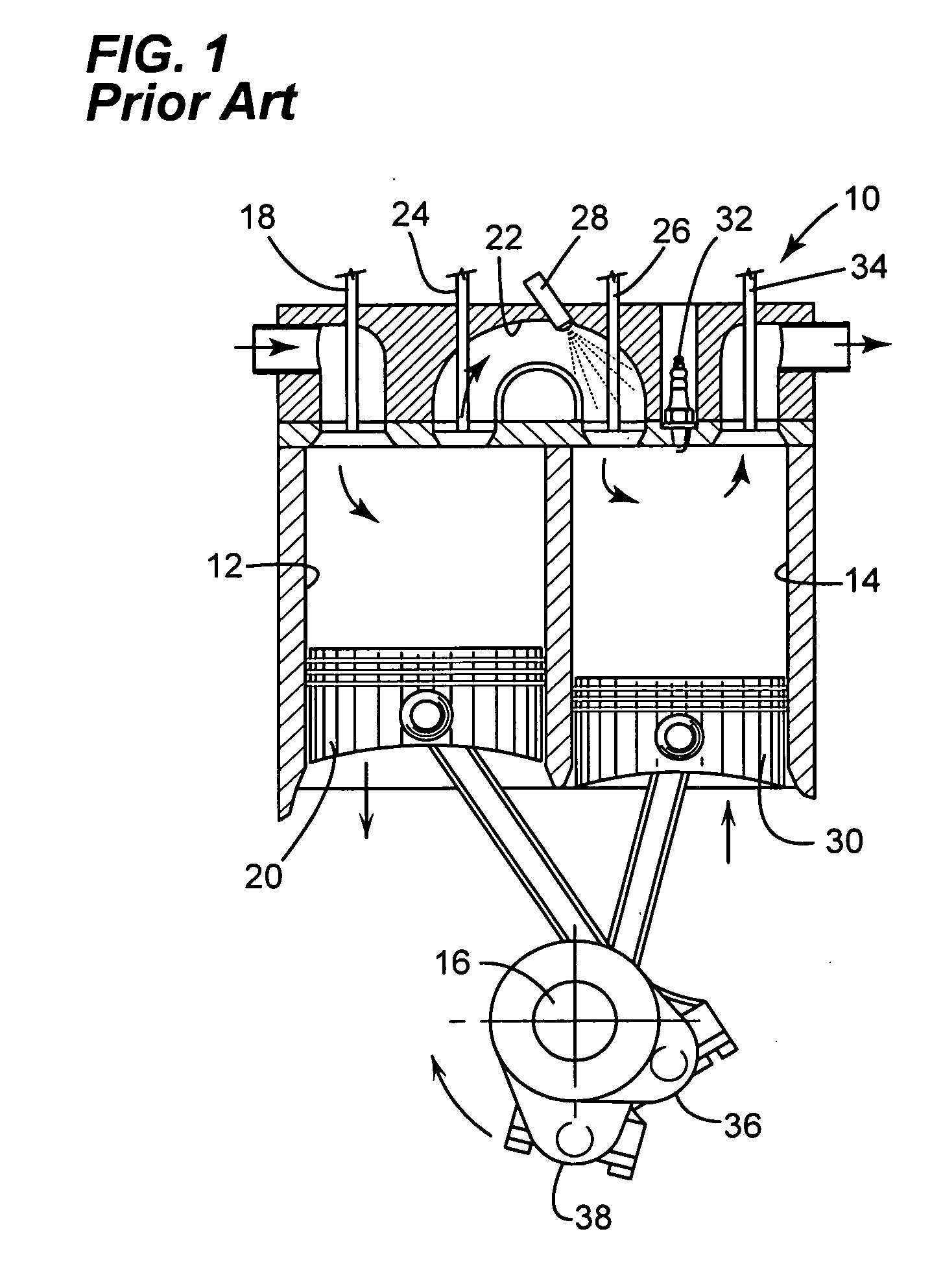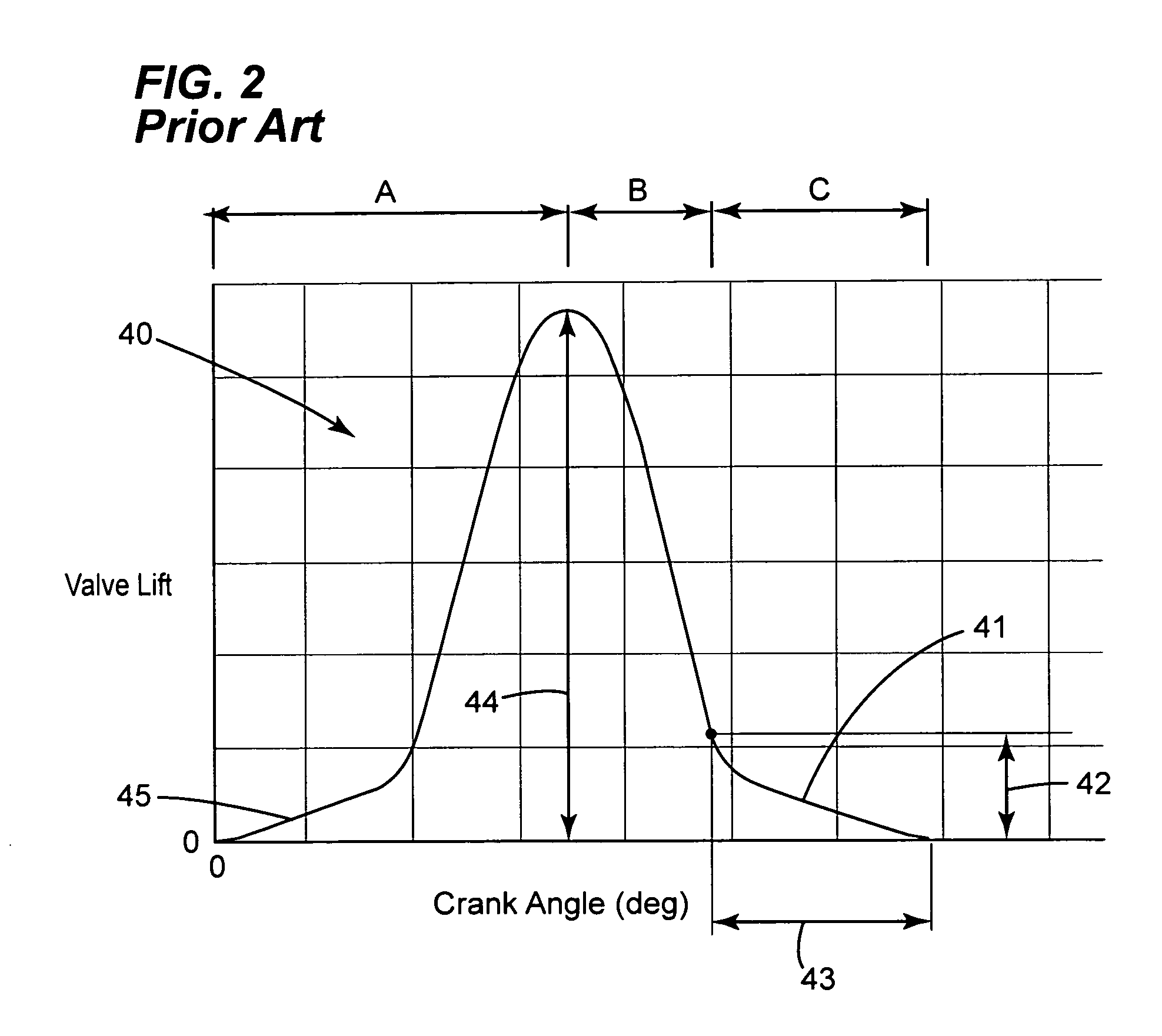Seating control device for a valve for a split-cycle engine
a control device and split-cycle engine technology, applied in the direction of machines/engines, mechanical apparatus, non-mechanical valves, etc., can solve the problems of unavoidable variations in parameters, limited flexibility, and high cost of cam-driven actuation mechanisms
- Summary
- Abstract
- Description
- Claims
- Application Information
AI Technical Summary
Benefits of technology
Problems solved by technology
Method used
Image
Examples
first embodiment
[0081]FIGS. 4, 5A and 5B show a seating control device 100 according to the present invention. In FIG. 4, the device 100 is shown connected, in line, with the valve stem 60 of the XovrC valve 24. In other embodiments, the device may be associated with the valve stem 60 by other means, for example a mechanical (lever, gearing etc) or hydraulic connection. Additionally, the seating control device 100 may be associated with the XovrE valve 26 (not shown).
[0082]The valve 24 is operated using a camless actuation system 62, shown schematically. The camless actuation system 62 may have one or more combinations of mechanical, hydraulic, pneumatic, and / or electrical components or the like.
[0083]With reference to FIGS. 5A and 5B, the seating control device 100 comprises a housing 101 having a base 102. The housing 101 has a central bore 103 defining a vessel 104, the vessel 104 containing a fluid. The fluid may be oil, or any other substantially incompressible fluid.
[0084]An upper snubber ele...
embodiment 100
[0100]In order to make the lower snubber element translatable, the position of the lower snubber element 106 with respect to the vessel 104 is hydraulically controlled, by altering the amount of fluid in the lower volume 160. Consequently in this embodiment 100, and as will be discussed in greater detail herein, the previously discussed Parameter A for controlling the squish effect, i.e., the distance between the upper 105 and lower 106 snubber elements at the point valve 24 closes is adjustable (i.e. it may no longer be a fixed distance).
[0101]A lower port 120 is provided in fluid communication with the lower volume 160. At least a part 121 of the lower port 120 is recessed in the bottom surface 113 of the bore 103. The recessed part 121 ensures that fluid passing through the lower port 120 may exert a force on at least a part of the lower surface 112 of the lower snubber element 106 even if the lower snubber element 106 abuts the bottom surface 113 of the bore 103.
[0102]A lower su...
second embodiment
[0134]In this second embodiment, the position of the lower snubber element 206 is controlled by a lever 270, pivotable at a first end 271, to control the position of the lower snubber element 206 with respect to the vessel 204. A second end 272 of lever 270 is associated with a hydraulic lash adjuster 280, the function of which will be described in more detail below.
[0135]A bearing element 276 is provided between the lever 270 and an arcuate lower surface 212 of the lower snubber element 206. The bearing element 276 has a substantially arcuate upper surface 277, which engages with the corresponding arcuate surface 212 of the lower snubber element 206. The bearing element 276 and lever 270 are provided with bores 278, 279 to receive the stem 60 of valve 24 therein. The bores 278, 279 are sized such that they do not contact the stem 60 at any point of rotation of the lever 270.
[0136]As the lever 270 rotates about its first end 271 (the pivot) in an anticlockwise direction, the lever 2...
PUM
 Login to View More
Login to View More Abstract
Description
Claims
Application Information
 Login to View More
Login to View More - R&D
- Intellectual Property
- Life Sciences
- Materials
- Tech Scout
- Unparalleled Data Quality
- Higher Quality Content
- 60% Fewer Hallucinations
Browse by: Latest US Patents, China's latest patents, Technical Efficacy Thesaurus, Application Domain, Technology Topic, Popular Technical Reports.
© 2025 PatSnap. All rights reserved.Legal|Privacy policy|Modern Slavery Act Transparency Statement|Sitemap|About US| Contact US: help@patsnap.com



